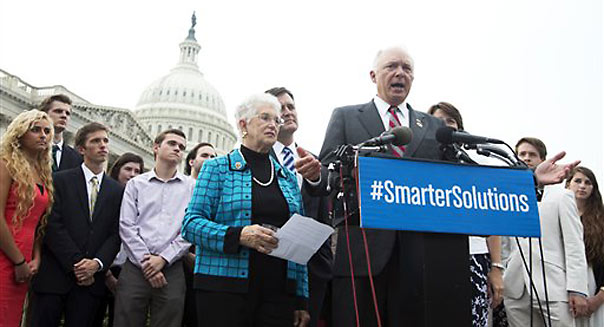
By Elvina NawagunaWASHINGTON – U.S. college students will likely pay a reduced interest rate of 3.86 percent on their student loans for the new school year, after lawmakers on Wednesday finally passed a compromise bill that would reverse a recent rate hike.The House of Representatives voted 392-31 in support of a bipartisan deal to lower interest rates on millions of new federal student loans. The Senate passed the bill on July 24 and President Barack Obama is expected to sign it into law.The action followed months of partisan bickering, with Democrats and Republicans blaming each other for a politically embarrassing delay that had the potential to cost students and their parents thousands of dollars.The legislation replaces a system in which Congress fixed interest rates every year and substitutes it with a market-based mechanism tied to the government’s cost of borrowing and capped to protect borrowers in the event of a severe spike in rates.The legislation passed just two days before Congress recesses for five weeks, after several failed efforts in the House and Senate.
Read more: A Revolutionary Student Loan Proposal, Far From DCInterest rates on student loans automatically doubled on July 1 to 6.8 percent after Congressfailed to meet the deadline to prevent the rate increase. Congress has since incorporated a retroactive fix that would keep borrowers of loans originated since July 1 when rates had doubled from paying the higher rate.The measure passed Wednesday pegs interest rates on student loans to the 10-year Treasury note plus 2.05 percentage points for undergraduates, and plus 3.6 percentage points for graduate student loans.The interest rate would roughly work out to 3.86 percent this year for undergraduates and 5.42 percent for graduates.Supporters of the bill say it gets politicians out of the business of setting student loan rates and provides certainty for students and their families.’Long-Term Fix’Critics of a market-based system say it fails to offer enough protection against increasing rates as the economy improves.”This bill provides American college students immediate debt relief on upcoming studentloans,” said California Representative George Miller, the senior Democrat at the House Committee on Education and the Workforce. “Families battered by the recent recession should have received this relief over a month ago.”
Read more: Declare Independence From Your Student LoansIn 2007, Congress lowered the interest rates on federal subsidized Stafford loans to 3.4 percent. That lower rate was due to expire last year, but Congress extended it for another year rather than argue about a replacement for it during an election year.Under the caps in the new plan, if market rates rise, undergraduates could pay as high as 8.25 percent and graduates as much as 9.5 percent. The rate could go to 10.5 percent for PLUS loans for parents who borrow to pay for their children’s college.”We wanted to get out of the partisan squabbling that has been happening in this city every year – let the market do it in a way that is fair to students and the taxpayer,” said Education Committee Chairman Representative John Kline, a Minnesota Republican.”After months of great uncertainty, students can finally breathe a sigh of relief knowing that interest rates on subsidized federal loans for college won’t double from last year and a long-term fix will be in place to avoid these annual political chess matches over the loan program,” said Peter McPherson, president of the Association of Public and Land-grant Universities.
